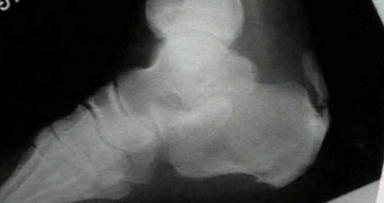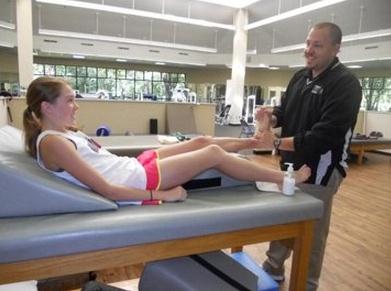Best Foods for Weight Loss
Losing weight has become one of the most researched items over the internet due to a large number of overweight individuals who want to lose weight, particularly women since they are conscious about their figure and constantly desire a slim body. But due to the introduction of processed foods consisting a lot of trans fat, empty calories, and salt, there have been an increase in obesity, especially in the western population.

A lot of diet suggestions, exercise regimens, and slimming pills have been circulating over the web. But the question is, where does weight gain come from? The simple answer is: Food! Yes, food is one of the major reasons for obesity and overweight coupled with sedentary lifestyle and genetics. However, the most effective way to reduce weight is to choose the right kind of food to stop gaining weight. Foods are the source of excess calories which make the body fat, so food is the answer to stop adding calories into the body. Here are some of the best foods for weight loss that are very effective in maintaining a desirable weight and preventing overweight.
1. Natural Foods
All natural foods do not contain preservatives, salt, and empty calories which make people fat. Reports have shown that that none of our ancestors have become obese and died of a heart attack; that’s because the foods they ate were only natural. Because of the presence of fast foods, packaged foods, and all sorts of foods available in the grocery markets, it is not far that many people now suffer from being overweight. The best tip for weight loss is to go for natural foods such as vegetables, fruits, self-cooked meals, and natural juice squeezed from the fruit itself. Cutting excess fats, salt, and calories from processed foods is an initial step in losing weight.
2. Fruits
Fruits contain glucose to give us energy but lack excess calories and fats to make us fat. Fruits make people full without those unwanted cholesterol and calories. The most effective fruits for weight loss include apples, grapefruit, cantaloupe, blueberries, oranges, bananas, grapes, peaches, pineapples, and strawberries. These contain fructose at a desired level, limiting glucose build-up in the body. It is advisable to have a fruit every meal to cut down the carbohydrates and proteins that one can take because just by eating these fruits, one is already satisfied. Fruits also contain electrolytes needed by the body for a healthy heart and nerve transmission such as potassium and sodium. One should substitute cakes and pastries with fruits for desserts.
3. Vegetables
Vegetables, just like fruits, do not contain high amounts of fats and calories. Have you seen a vegetarian who is overweight? Definitely not! Vegetables contain vitamins and minerals which help increase the immune system, yet they do not contain harmful fats and excess calories. Vegetables are also high in fiber, which eliminates excess fats in the gut. The best vegetables for weight loss include asparagus, broccoli, salad greens, tomatoes, spinach, onions, cucumbers, zucchini, green, yellow and red bell peppers, and mushroom.
4. Lean proteins
Proteins increase muscle mass, not fat. Weight loss addicts always want to have lean muscles instead of fat. Consuming lean proteins maintains an ideal body weight and prevents fat deposition. Losing weight does not mean the person is going to look emaciated. When one wants to lose weight, it is better to replace excess fats with lean muscles. Lean proteins include egg whites, chicken breast, trout, and lean meats from turkey, buffalo, beef or pork, steak from grass-fed beef, salmon, and many other fish. These not only help the individual lose weight, but they also reduce the risk of heart diseases, heart attack, and stroke.
5. Whole grains
Whole grains contain high amounts of fiber that help the body flush out cholesterol and fats. Whole grains also have a low glycemic index, which means that the conversion of food to glucose is slow, thereby reducing high blood sugar levels. Whole grains also make a person feel full even if he or she still has not eaten too much, decreasing his or her overall food intake. Whole grains consist of oats, brown rice, whole wheat bread, whole grain pasta, barley, and rye. This should not be eliminated from the diet because whole grains help reduce weight, plus keep the colon and intestines healthy.
6. Starchy Carbohydrates
Carbohydrates are one of the foods that make a person gain weight when wrong carbohydrates are substituted with starchy carbohydrates. Empty carbohydrates which make a person fat consist of fries, potato chips, white rice, white bread, doughnuts, pretzels, and other similar products in the market. Instead of indulging oneself in these foods, the individual should consume starchy carbohydrates such as brown rice, sweet potatoes, mashed potatoes, beans, and lentils. These offer the right amount of calories for him or her.
7. Water
Instead of drinking sodas that contain high amounts of sugar, one should drink water to hydrate the body. Water does not contain fats, cholesterol, and calories but just plain fluid for hydration. One should try to have water during meals to decrease the food intake because water makes the person full quickly.
8. Nuts and Seeds
Nuts and seeds are also helpful in weight reduction. They contain high amounts of protein to make the body leaner. However, processed nuts and seeds which contain high saturated fats and salt should be avoided, so one should try the all-natural nuts and seeds which have not been processed available in the market.
Losing weight does not mean cutting down food intake. Food is still essential for the body and decreasing food intake will just make the body unhealthy and weak. Instead of opting to not eat to lose weight, try to consume these foods rather than those foods in the fast food chains and grocery stores.






